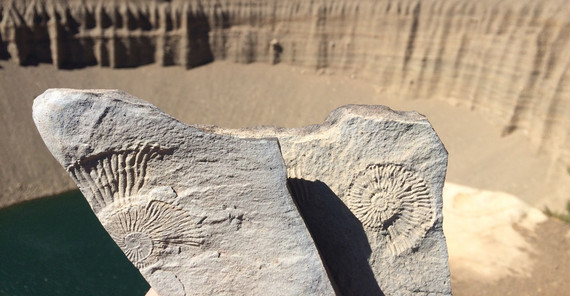We are leaving Mendoza and drive to the South along the famous “Ruta 40”, the longest road in South America. Today we are heading to Malargüe and the northern part of the Neuquén Basin. Suddenly the road stops and is redirected for 120 km on a washboard road through the Argentinean “Pampa”. After tough 3 hours of shaking we turn again into the direction of the Main Cordillere of the Andes. We pass Cretaceous and Jurassic sediments and find ammonites – fossil creatures, who used to live in lagoons and shallow marine conditions during these times. On the way to the pass to Chile, we discover 40 m deep karst lakes – the only ones in the entire Mendoza province.
We are close to the Chilean border, 3000 m above the sea level and well above the late summer snow line. The air is cold and a strong wind keeps us busy to hold our hats and caps in place. Here again, the limestones show marine fossils and proof that these rocks had been uplifted to high elevations during the shortening of the Andes.
The fuel indicator of our small bus is in the red zone. We are far away from the next gas station. However, our driver Sergio manages the 80 km economic driving and we arrive Malargüe with an empty fuel tank.
Text: Henry Wichura
Published online by: Agnetha Lang
Contact for the online editorial office: onlineredaktionuuni-potsdampde
Prior journal entry
Next journal entry
Show all journal entries

